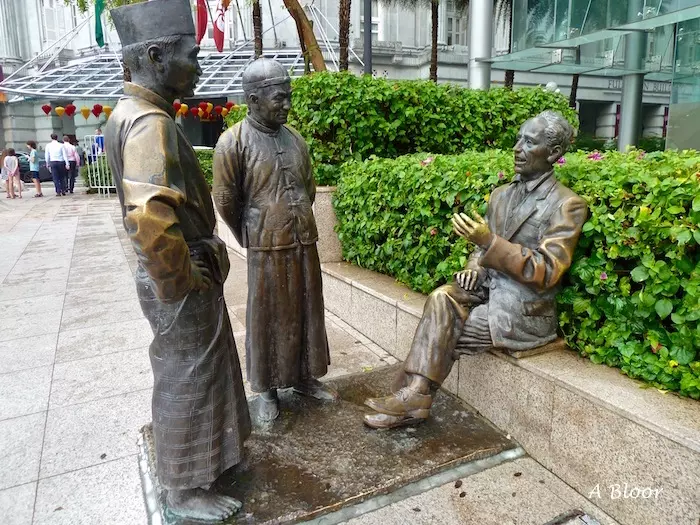Singapore Heritage: The People Who Made this City
- AWA Editor
- Sep 8
- 3 min read
Hidden in Plain Sight: Discovering Singapore's Vibrant Art Scene by Jennifer Williams and Isabelle Tadhoury
(previously published in AWA Magazine Sep-Oct 2022 issue)
Before Singapore reclaimed more land, downtown ended where the Fullerton Hotel and Clifford pier now stand. The Marina Bay Sands was nothing more than open ocean. Until 1996, what's now the Fullerton Hotel was the general post office and across the Cavenagh bridge in the Empress Place Building were the government offices. In 2003, this became the Asian Civilisations Museum
(ACM). As Singapore expanded and modernized, this vital patch of the city became the epicenter for public art that depicts Singapore’s commercial past.

On the banks of the river, steps from the Fullerton Hotel, a bronze sculpture of joyful children leaping into the water is a slice of daily life from early days. Sculpted in 2000 by Singaporean sculptor and Cultural Medallion award winner Chong Fah Cheong, First Generation, is a reminder that children once commonly played beside bumboats unloading their wares along Boat Quay.
A few steps further along the river, in front of the Maybank Tower, sits another quintessential scene from Singapore’s trading times. The River Merchants by Aw Tee Hong depicts prominent Scottish merchant Alexander Laurie Johnston mediating between a Chinese trader and a Malay chief, while coolies load sacks onto a bullock cart.
Before heading across the bridge, catch a glimpse of a mother cat with her kittens on one of the stone pillars. The bronze sculpture depicts the Singapura cat, listed in the Guinness Book of World Records as the smallest breed, and by Singapore Infopedia as one of the rarest cats in the world. The cat is called Kucinta and is the unofficial mascot of the tourism board in Singapore.
On the other side of the river (on the side of the ACM) is Chettiars to Financiers by Chern Lian Shan. This sculpture represents the various financial institutions of olden-day Singapore. Financial businesses set up their offices near the Singapore River to be close to the area’s many trading houses. In this sculpture, the figure seated at the low desk represents a South Indian chettiar (moneylender), while another figure in the middle portrays a Chinese clerk and the third figure with his raised hand is a trader trying to make a deal.

On the front lawn of the Asian Civilisations Museum are five reflective spheres that commemorate Singapore’s 50 years of independence. Created by Singaporean artist Baet Yeok Kuan, the 24 Hours in Singapore spheres are supposed to capture everyday sounds of life in the city, from the rustling of the MRT to the sellers at the local wet market. Unfortunately, the audio on the sculptures is faint and can’t be heard very well.
Before the museum entrance stands a bronze statue of four men weighing goods. The Great Emporium by Malcom Koh honors the coolies who helped build Singapore from its early trade in silk and spices to its later trade years in rubber and tin.
This five-minute walk at the mouth of the river will give you a sense of what Singapore River life was once like. Be sure to visit inside the ACM. We think it's the best museum in town, as it combines numerous ancestral treasures of the region.

Isabelle and Jennifer share a love of art, good coffee and exploring Singapore. Both came here in 2019 and are always on the lookout for the next great statue or mural that is just around the corner. |












Comments